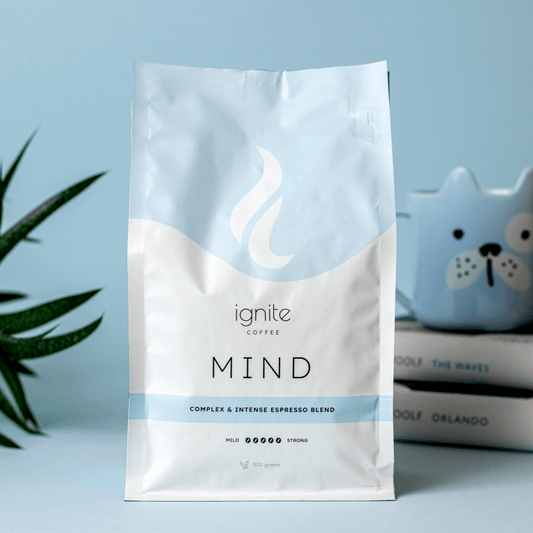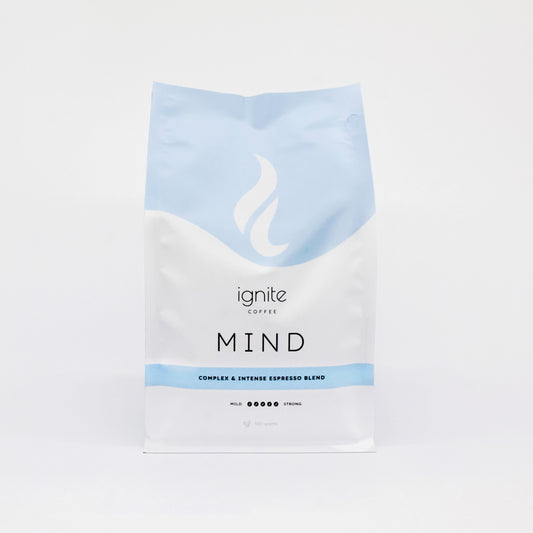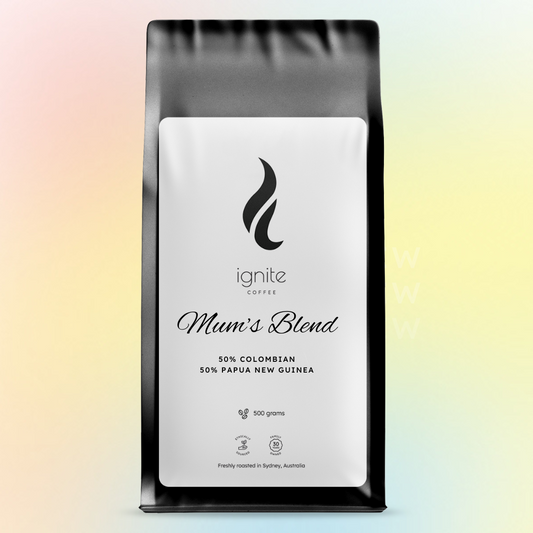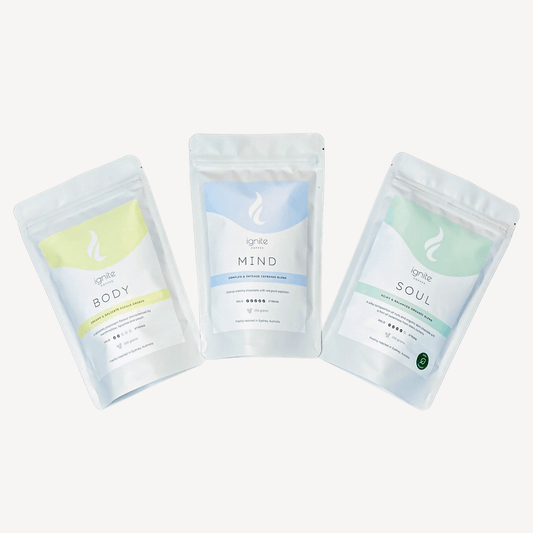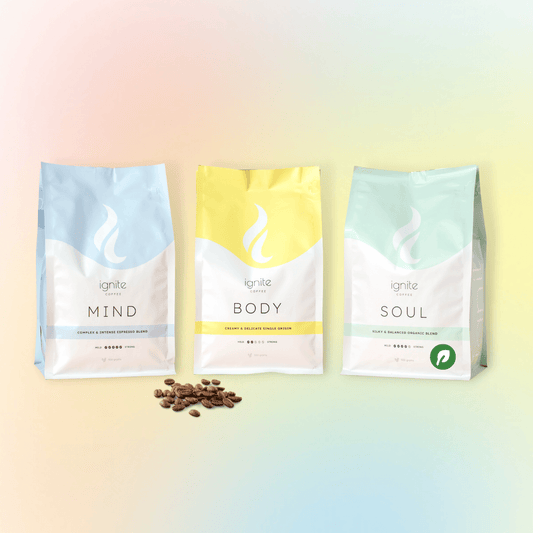Do you enjoy the taste of a rich, dark roast? Or do you prefer the lighter, more subtle flavours of a light roast? If you can't decide which type of coffee is best for you, keep reading. In this blog post, we'll discuss the differences between light, medium and dark roasts and we'll explain the roasting process, to help you find the one that is right for you.
Which is better - dark roast or light roast?
Many of our customers ask the question - is coffee best roasted light or dark? Here's a TLDR summary of light roast coffee vs dark roast coffee:
-
Is the flavour impacted? Yes.
-
Is shelf life impacted? Yes.
-
Is the grind different? Yes.
-
Is the caffeine level different? It depends on how you measure it!
So which is better?
The truth is it really comes down to your own personal taste preference. And much like personal choices for wine, cheese, pizza toppings and footy teams - there is no one right answer.
A Note on Coffee "Beans"
Little side note first… coffee "beans" are not actually a bean, but technically they are the seed that grows inside the cherry fruit of the coffee plant. But to keep it simple, let’s keep referring to them as "beans" for this article.
OK, now resuming normal transmission: coffee roasting.
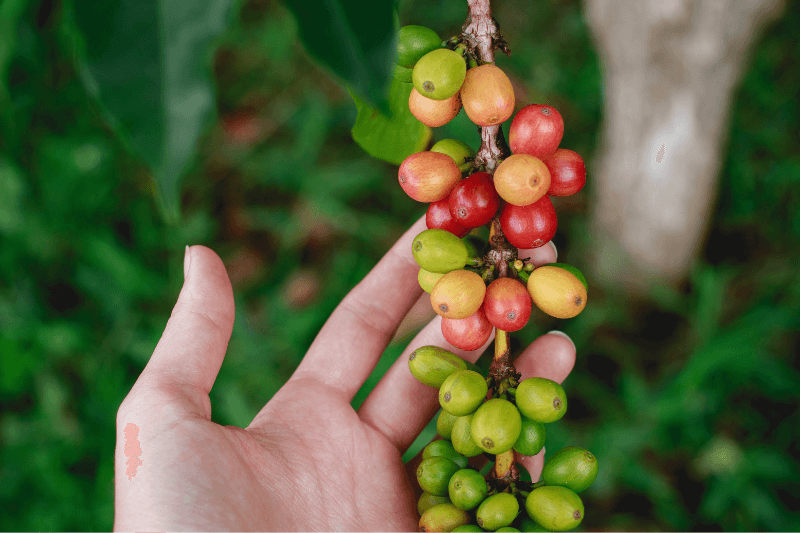
Your daily brew's journey starts from the seed growing inside these coffee cherry fruits.
Factors During Roasting that Influence the Taste of Your Coffee
The roasting process is a complex one and there are many different aspects that can impact the flavour of the coffee. Here are some of the most important factors during the coffee roasting process that affects how your coffee tastes:
1. Temperature
The temperature of the roasting machine is extremely important and it can vary depending on the type of roaster being used. If the temperature is too low, the coffee will roast slowly and develop a bitter flavour. If the temperature is too high, the coffee will roast too quickly and will taste burnt.
2. Time
The amount of time that the beans are roasted also plays a role in the flavour. A shorter roast time will result in a lighter, more acidic coffee (these are your lighter roasts), while coffee beans roasted longer will produce a darker, richer flavour (these are your dark roast coffee).
3. Movement
The movement of the beans during the process also affects the flavour. Beans that are stirred constantly will roast more evenly and will have a more consistent and smooth flavour than beans that are not moved around.
4. Moisture
The level of moisture in the beans also affects the roasting process. If the beans are too dry, they will roast faster and will be more likely to burn. If they are too wet, they will not roast properly and will not taste as good.
5. Size
The size of the coffee beans also impacts how they roast. Larger coffee beans take longer to roast than smaller ones and they also have a higher moisture content.
Behind the scenes with Adam, our specialty coffee roaster
Coffee Roast Levels: Light, Medium, Dark Roast Coffees
Let’s dive into the process of converting green beans into the rich, aroma-filled coffee that you know and love.
Simply put, the roasting process is the baking of the raw green coffee beans to extract the moisture within. Typically green beans contain around 15% water. The heat in the roasting process removes this moisture.
It also converts the dense green beans to various shades from light brown to dark brown under the Mallard process, a chemical reaction between amino acids and reducing sugars that give food its distinctive browning and delicate flavours... much like cooking a steak.
As you would expect with any cooking process, the longer the roast, the dryer and darker the beans get. At around 200°C, much of the moisture has been extracted from the green bean, and it begins to expand to almost double its original size. As the pressure builds within the bean, it begins to shed its skin, which then causes the bean to "crack", giving off a sound similar to popping popcorn.

Light Roast Coffee
It is at this "first crack" stage that the coffee becomes edible and is considered to be a light roasted coffee. A light roast is typically roasted to an internal bean temperature of between 205°C and 215°C and is often referred to as a "light city roast" or "half city roast".
In this state, the coffee will have a light brown colour with no oil on the surface of the bean. Light roast beans contain some moisture and density, thereby retaining the more natural floral and fruity flavour notes of the coffee's origin. This roast level is a favourite in the specialty coffee industry as it highlights the coffee bean's natural characteristics.
Light roast coffees typically have higher acidity and a longer shelf life because there is less CO2 released during the process which lets it age more slowly.
Our BODY variety is our light roast coffee, with a creamy, light to medium body and prominent flavour characterised by marshmallow, liquorice and peach.
Medium Roast Coffee
Once you've passed the light roast stage and in only a matter of minutes of continued roasting, the beans become darker, dryer and begin to crack a second time (at around 225°C). It is at this time the beans are removed to obtain a medium roast - allowing a more intense chocolaty and nutty balanced flavour, with slightly less of the characteristics of their origin.
Medium roast coffees have a slightly dark brown colour and are a bit sweeter than lightly roasted beans. And although the coffee bean surface comes out dry, medium roasts may take on a slightly oily sheen when ground.
Also referred to as a "regular roast" or "American roast", medium roast coffee tends to be a bit more balanced and has less acidity than its lighter counterparts. They also have a fuller body and a more complex flavour profile, which makes medium roasts the perfect introduction to specialty coffee.
In terms of shelf life, you could say that medium roasts are Goldilocks-level: just right.
Our SOUL variety is our medium roast coffee with 100% organic Arabica beans, roasted to create a silky smooth composition of nuts and organic dark chocolate with a hint of sweetness from black currants.
Dark Roast Coffee
As the roasting process continues and the cracking becomes more distinct, the bean rapidly darkens from medium to dark, caramelising the sugars in the coffee beans and giving it a slight sweetness with a bolder and richer flavour.
However, because dark roast coffees have been roasted for so long, they often do not retain much of the coffee bean’s origin characteristics. This is why this roast level has historically been the go-to for coffee roasters looking to combat low quality coffee. But with high quality beans now more readily available, specialty roasters use darker roasts to bring out those complex and intense flavours.
Dark roasts tend to have a heavy body and low acidity. Interestingly, though the driest of the three roasts, the dark roast coffee bean has a shiny, oily surface from the oils released during the longer roast.
The formation and extraction of these oils provide the rich notes and traditional taste of espresso coffee, which is why dark roast coffee is often prepared as espresso.
We roast our MIND variety as a dark roast blend perfect for espresso lovers who are after an intense creamy chocolate and red plum flavour explosion.
Does Dark Roast Coffee Have More Caffeine than Light Roast?
Dark roast coffees taste richer and are generally seen as having more caffeine than light roasts. However, a more robust flavour does not usually indicate a higher caffeine concentration since we can't actually taste caffeine.
The truth is: light, medium and dark roasts have about the same caffeine per bean.
Roast levels make a difference in caffeine content though when you compare and measure light and dark roasts by volume and weight.
Dark roast coffee beans tend to be bigger in size compared to light roasts as the beans expand during the roasting process. This means that between a scoop of light and dark roast, you'll end up with a smaller amount of dark roast coffee and therefore less caffeine.
If you compared the two by weight, however, you'll need more dark roast coffee to make the same brew as they've lost more moisture in the process and therefore weigh less than light roasted coffee. And of course, more coffee = more caffeine.
It's also worth noting that the bean variety also plays a factor. Robusta coffee beans contain nearly twice the amount of caffeine as Arabica, a variety often featured in specialty coffee.

Roast levels do not affect caffeine content in a bean but measuring your coffee by scoop or weight can change the amount of caffeine in your cup.
Comparing Roast Levels
So, let’s summarise as follows:
Still can't decide?
In the battle of light roasts and dark roasts – there is no single right answer, just let the force guide you.
If you're new to the world of specialty coffee, sample packs are a good way to find your new favourite. Grab the Ignite Coffee Lovers Sample Pack and enjoy freshly roasted coffee as you go through the journey from light roast to medium roast to dark roast.
Pin this post







